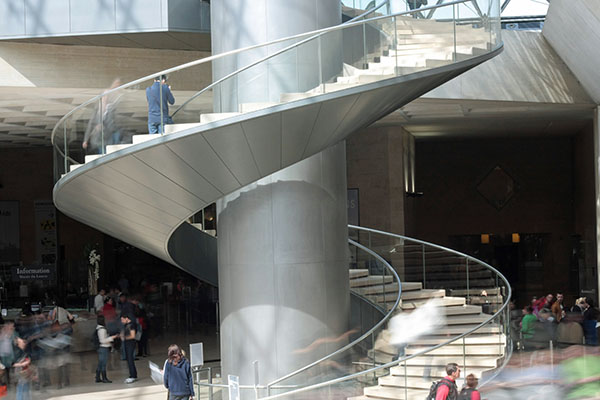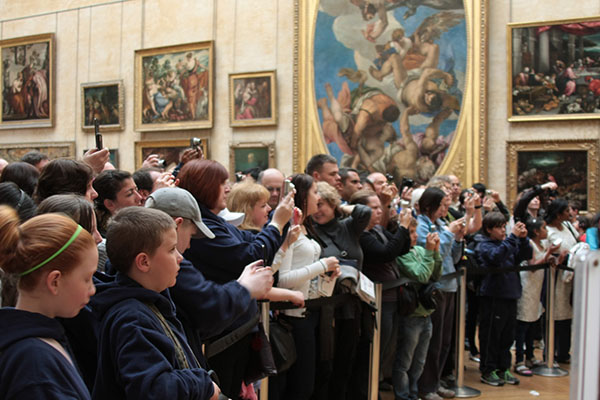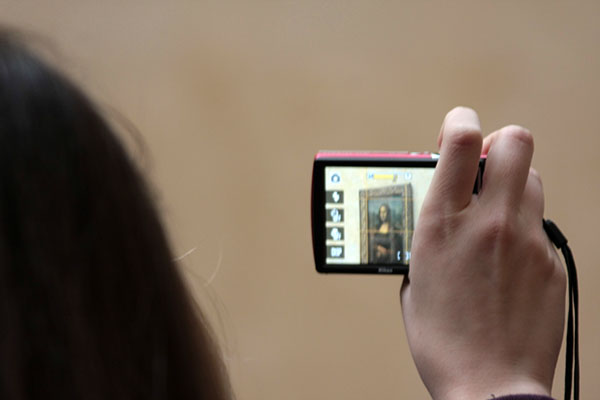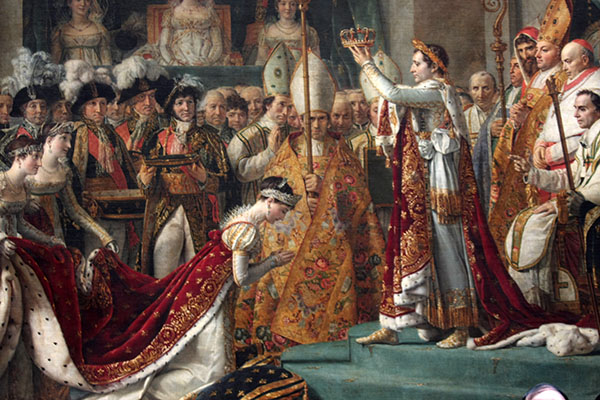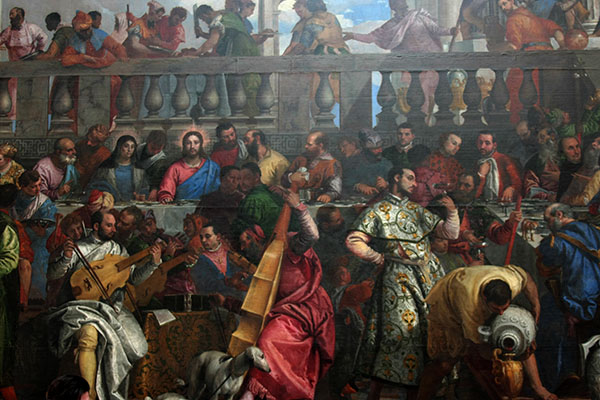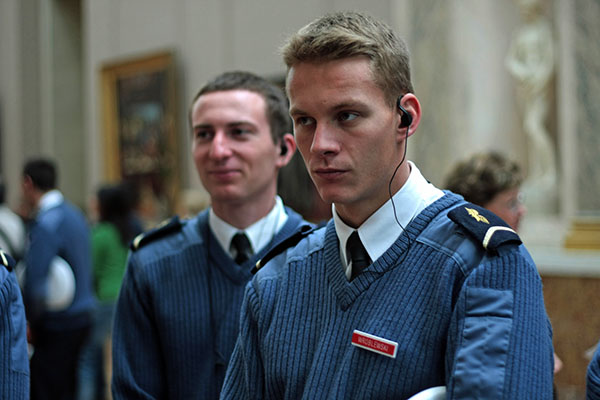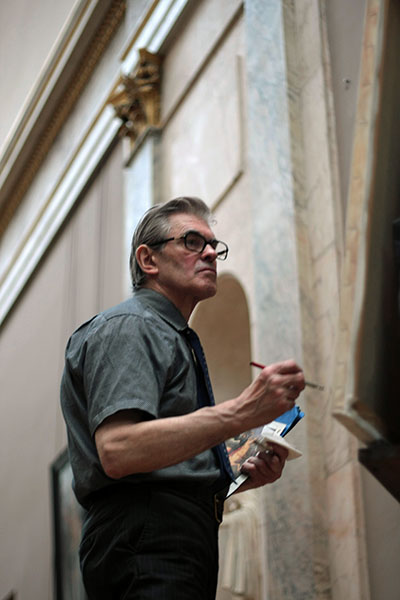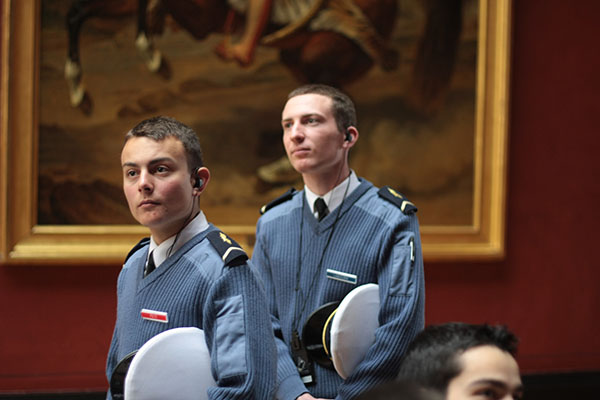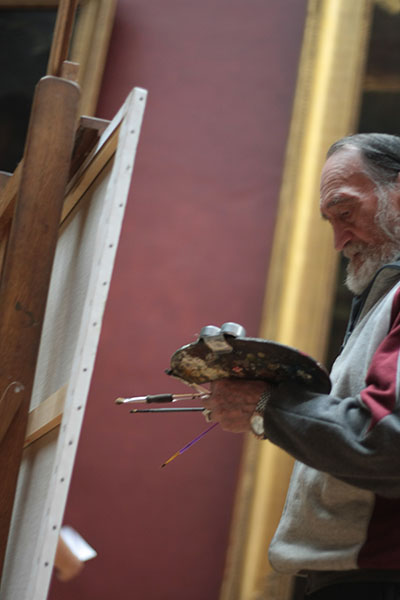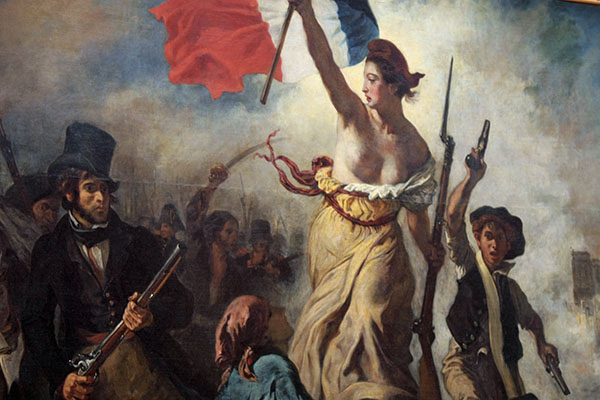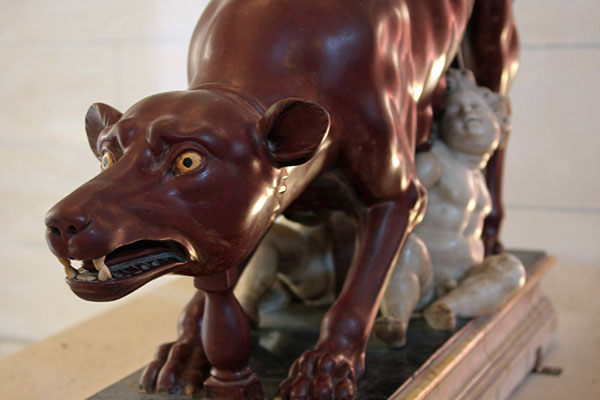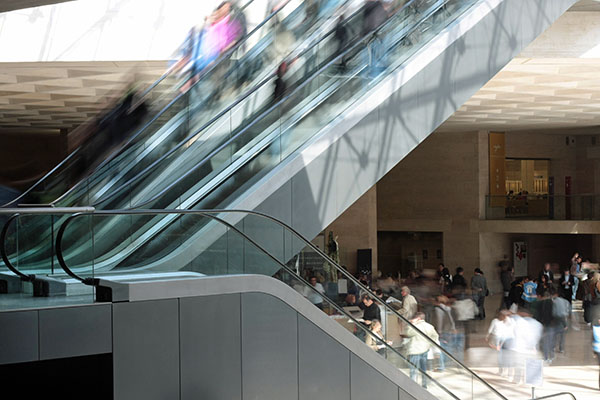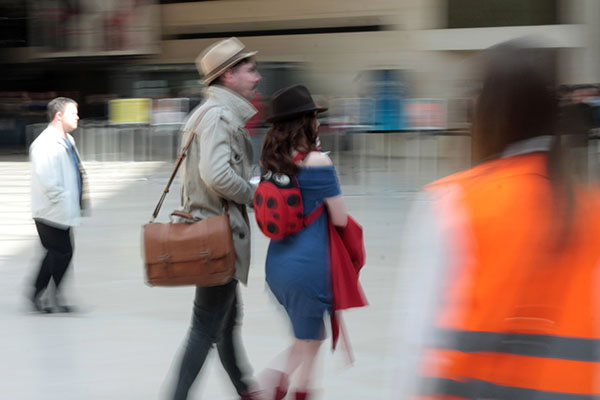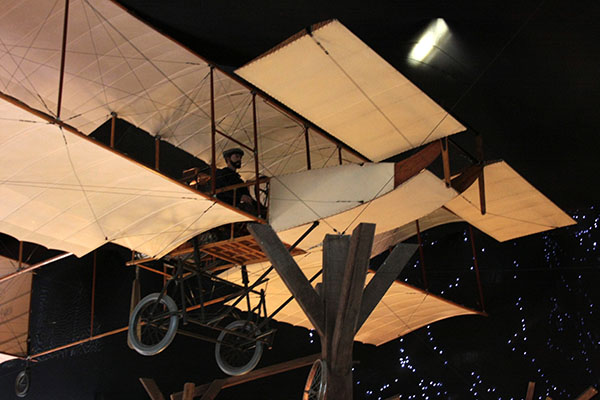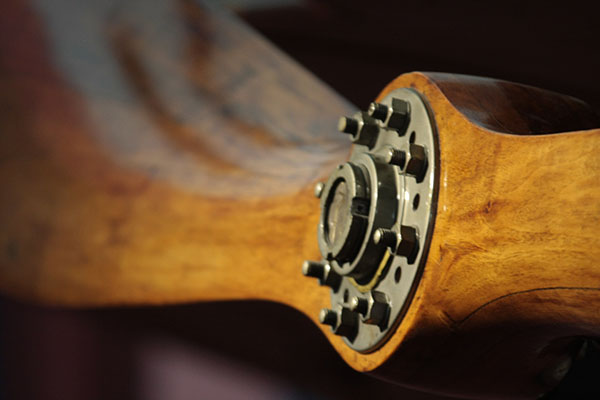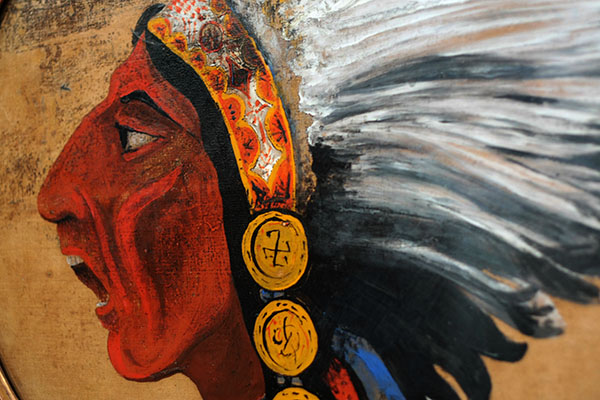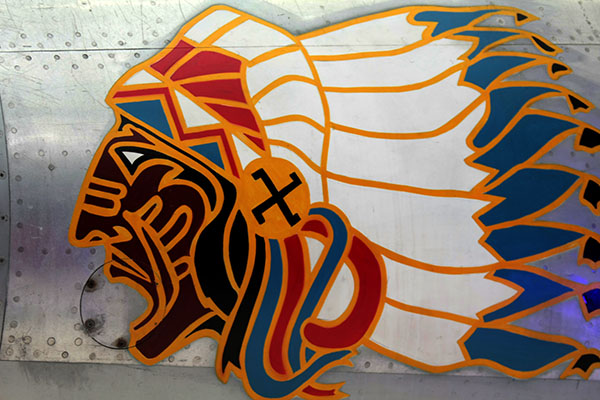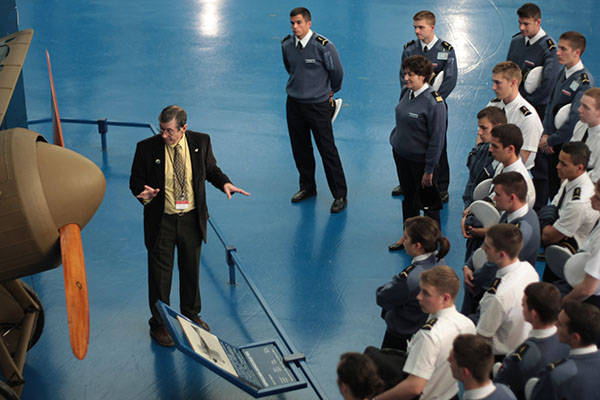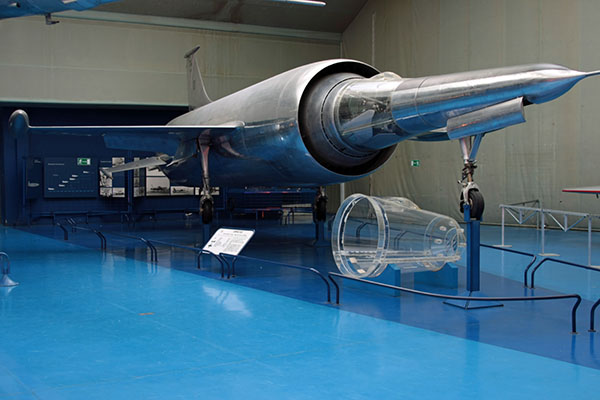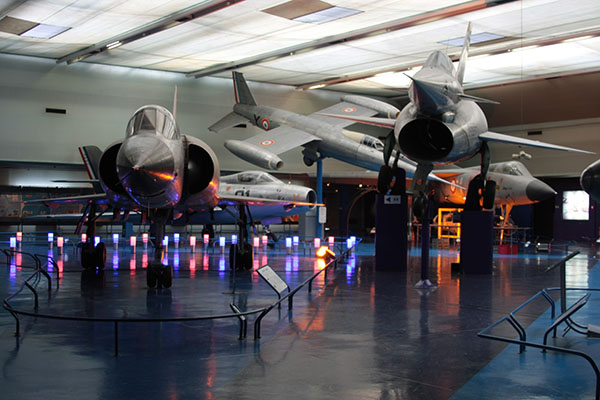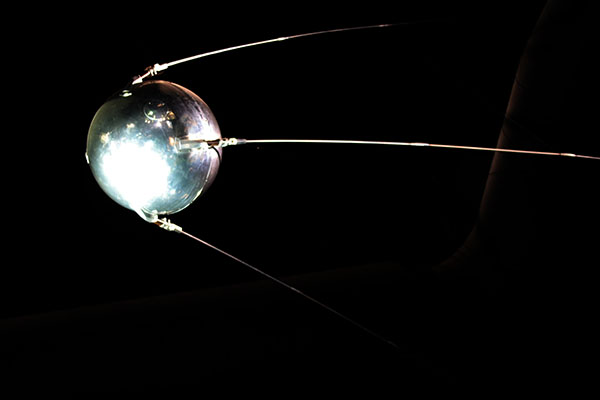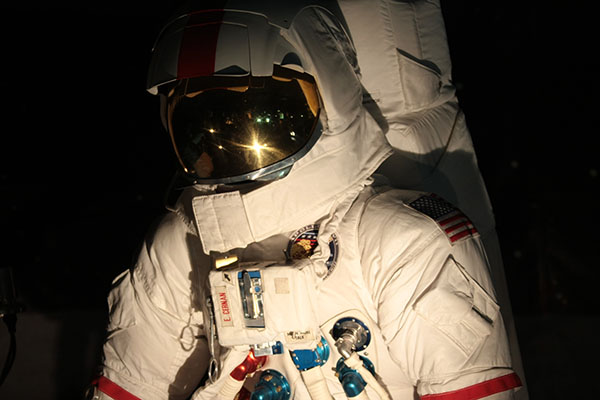The second week in April, I had the opportunity to join the school and some of the students up in Paris for a week of touring around professional and cultural sites for the benefit of the students. I was happy to tag along and participate.
Although I’ve already visited the Louvre several times, its always a pleasure to go back. In this case, we had the added bonus of a personal guide.
Here is the entrance underneath the glass pyramid. As you can tell, I used the ND filters to open the shutter longer and blur the action. The column in the middle is a cleverly designed cylinder that serves as an open-air elevator.
This 4,600 year old piece of art is the Great Sphinx of Tanis. It was found in Egypt in 1825 and like so many things from that time period, brought back to France.
This is the iconic Aphrodite (AKA Venus de Milo). You may remember her and our friend the sphinx from an earlier post (Paris 2006).
This is the painting I didn’t show in the earlier post. Can you guess what it is??
Here it is … sorta. It almost looks big and impressive, don’t you think?
Here’s a better look at the reality of the situation (and keep in mind, this is off-season, in the middle of the week!).
This is the immense painting of the consecration of Emperor Napoleon I and the coronation of his wife, Empress Joséphine. This was painted to be nearly life-like and life-size by Jacques Louis David in 1804 at the request of Napoleon himself. At the end of David’s work, the Emperor was apparently delighted with the final result. According to the Louvre’s website, he said, “What relief, what truthfulness! This is not a painting; one walks in this picture.” I don’t know about truthfulness … there were a number of artistic liberties taken, but since the artist was actually at the ceremony, it was certainly very close. I have cropped this image down just to highlight the central figures.
Another interesting image is this ginormous representation of Jesus’ first “miracle.” According to the Bible, he turned water into wine at a wedding ceremony. Not a bad trick if you ask me. However, roughly 1500 years after this event supposedly took place, a Benedictine monastery on the Venetian island of San Giorgio Maggiore commissioned Veronese to paint the Wedding Feast at Cana. And, they wanted something big. Really big. So big that it’s larger than the average Parisian apartment size today! It measures 70 square meters (~750 square feet). What’s also interesting is that Veronese had an eye for detail and this painting was an amazing amalgamation of the 16th and 1st centuries of the current era. Plus fans of Dan Brown’s “The Di Vinci Code” will remember this painting from the book. Although fiction, Mr. Brown provides interesting hypotheses on certain details.
A couple of the cadets listening to our guide through the ear piece.
An artist working amongst some of the best.
More cadets…
Another artist…
The Paris Uprising of 1830 (when the Bourbon king, Charles X, was overthrown and replaced by Louis Philippe, Duke of Orléans) inspired the French master Eugène Delacroix to paint Lady Liberty (or in this case a Parisian woman who embodies Liberty) leading the Parisians in their “glorious three days” of uprising in May 1830.
Another famous symbol … but this time for Rome. Romulus and Remus are disturbingly suckling the wolf.
While waiting for the other group, I had a little time to shoot the fascinating entrance way. Here’s what I came up with:
Later that day, we continued with another museum. The French Air and Space museum at Le Bourget. It’s in an old airport terminal and huge! It’s also the site of the famous (and also huge) Paris Air Show (simply known at the Meeting Le Bourget in French).
There were exhibitions from early aircraft pioneers (with slightly different emphasis than ours on the Wright Brothers).
They have so many beautiful, original pieces.
This image is emblematic of the original Franco-American Air Force cooperation. Before the US entered WWI, there were American pilots flying with the French. This was originally known as the Escadrille Américaine, but later renamed to the Escadrille Lafayette in order to appease the German government that the US was remaining neutral. The members of the unit chose this head of a Sioux (or Seminole) warrior as their emblem. It adorned their Nieuport (and Spad) aircraft.
Then a later emblem from the same group:
One of the groups on the tour with a guide.
If you can imagine it, the pilot of this prototype aircraft sat in the small capsule. This aircraft, the Leduc 0.22 was a test aircraft that combined a turbojet with a ramjet. Unfortunately, the design proved unable to achieve supersonic speed and the project was abandoned in the late 1950s. Still, it’s a interesting looking plane.
Some of the other French test aircraft on display.
The iconic Concorde used by Air France and British Airways. The museum has two, and for a small fee, you can go see inside.
A model of the equally famous Sputnik satellite.
No good air and space museum would be complete without an American astronaut (or at least a space suit). 🙂
Well, that covers my week in Paris. I know I only included pictures from the two museums we visited, but I promise there was a lot else we saw … I just didn’t have my camera along or wasn’t allowed to take pictures.
Today seemed fitting to post this entry, since we are celebrating the 66th anniversary of V-E Day in France today.
Next up will be the first series of images from our Spring Break cruise.
Until then…
–Jim

